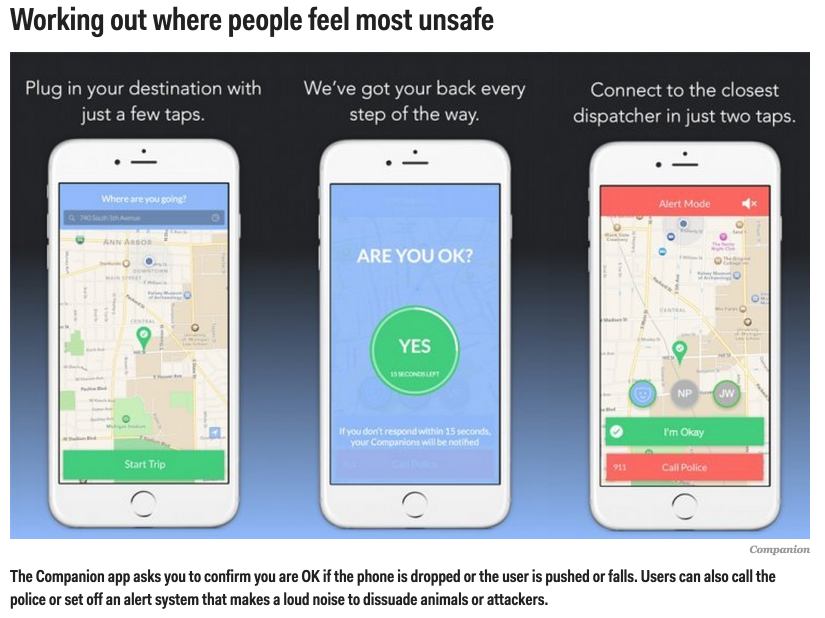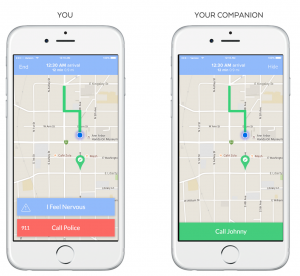WebRTC is just a video communications protocol, but look no further than your cell phone to know that any communication tool can also play a big role in public safety. When I got my first flip phone in the 90’s (yes, I am that old, but just barely), it was mainly for safety reasons – I had a long drive home at night and I had recently had a car accident with no way to call my wife.
My wife Lauren pointed out this Business Insider article on the Companion App to me, which illustrates how mobile apps that address public safety are going well beyond a simple “call 9-1-1” button on your phone.
The Companion App is a mobile app that lets you connect with friends to provide you a virtual companion on your walk home. When you are nervous about the area you are walking home in, you just connect to one or more friends via this app and SMS, and then they can follow your progress via GPS. If you stray from the path, or the phone detects you are running or have fallen, it will call the police if you don’t confirm to the app that you are ok.
Could WebRTC be integrated into an app like this for even more safety benefits? This is an interesting area to consider. While Telemedicine, video conferencing tools, and EdTech or virtual education get a lot of attention for WebRTC use cases, public safety and emergency communications is another interesting area to consider.
Here are a few ideas of how the addition of WebRTC for peer-to-peer video communication would improve a mobile application like the Companion App:
- Direct video chat with your friends – When an emergency is detected, allow your friends to try and call you.
- Live video streaming – Similar to Meerkat or Periscope, perhaps you want your friends to see a live video stream from you as you walk home. If an emergency does occur, they may have clues about what happened from the video feed.
- Automatic photo archiving – The app could take a photo periodically or just after an emergency is detected to provide evidence, and that photo can be sent to your friends right away in case the phone is destroyed. This could be combined with the live video broadcast to grab still photos from the video just before an event was detected.
- Intruder detection – If the unthinkable happens, then a criminal is likely to try and disable the phone of the person they’ve abducted. The app could attempt to take a photo of the person as they try to disable the phone, and send that off the device immediately.
There are many other ways you could probably take a very interesting application like Companion App, and make it even better with the use of video.
Emergency services is an interesting area to consider for WebRTC applications. The topic of emergency communications is one of the themes of the upcoming TADHack hackathon in Chicago. Our WebRTC.ventures team will be in that hackathon, as well as exhibiting at the Illinois Institute of Technology’s Real Time Communications (IIT RTC) Conference that same week.
Are you considering adding WebRTC into your web or mobile application? Let our team of experts take care of it for you! We can provide complete application design, development, testing, and hosting. Just contact us for a quote!













